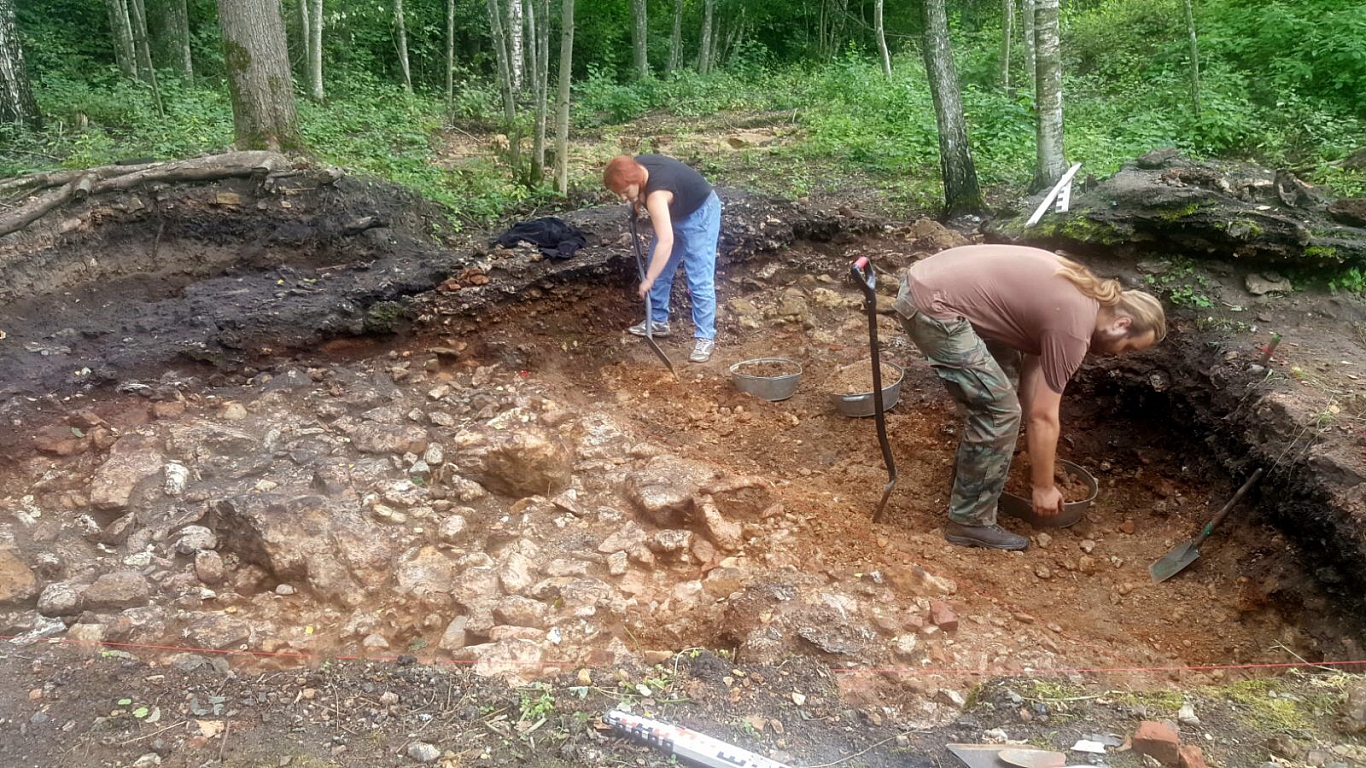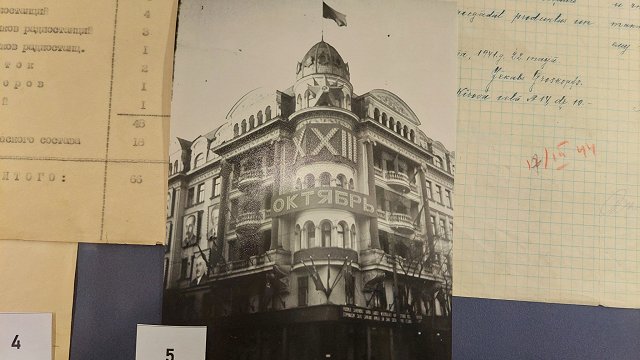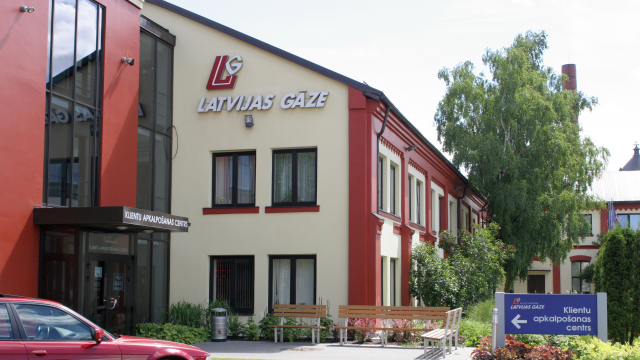It is the second year of excavations at Vecmuižas iron factory, around 50 kilometers from Riga with a picture forming of a surprisingly advanced seventeenth-century metalworking facility.
"The place where we are now sitting was most likely under water. Water pipes came here, and the river Zvirgzde was flooded with a large dam. When it was necessary for the big wheels, which operated various equipment - drill bells, bellows - then the lock was opened," says Dita Auziņa, head of excavation.
Archaeologists have found a number of cannonballs, iron bars and bottom of the boiler this year.
Meanwhile, the cultural layer has been uncovered to a depth of three meters in several places. Last year, trenches revealed the approximate location of an ancient industrial site, but this time it was possible to supplement the historical picture with more precise infrastructure patterns.
"We have found a blast furnace: there are foundations of the furnace, huge hollow walls, dolomite stones 70 centimeters in diameter, and very large slurry chambers, about one and a half in meters in diameter, which could only have been formed at the bottom of the blast. At the moment this is the main evidence," says Auziņa.
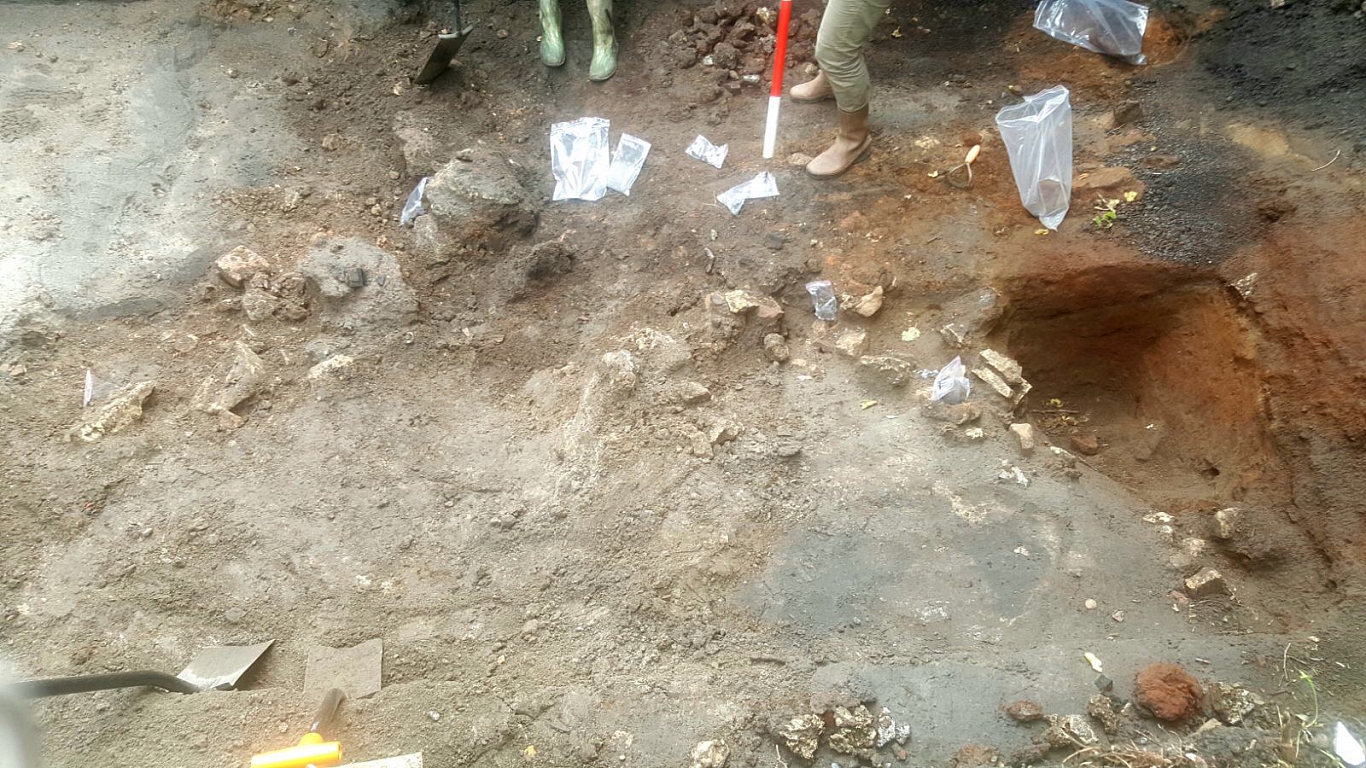
She also points out that this would have been a large industrial concern reaching far into the hinterland of Zemgale region. Roads and bridges would have been required for the supply of ore from bogs, plus huge amounts of charcoal that would have to be produced from surrounding forests in order to reach temperatures of close to two thousand degrees in the furnace.
The iron extraction site extends about 600 meters along the river, where various activities took place. Most likely local peasants worked under the guidance of foreign master craftsmen in iron extraction and fabricating shot, cannon and ship parts.
Not far from the manufactory, the unusual name of a rural dwelling "Deprejas" is believed to derive from the French name 'Duprey' or some variant, quite possibly retaining a memory of one of those foreign experts.
"At least nothing has been built up on top... this is one of the objects that has been less affected by later times. And archaeological sites from the 17th century are not common for us, we are just starting. So far the attitude was that the 17th century was not really archaeology. But with the 17th century we can refer to both physical objects and written sources, creating a complex approach," explains the project manager, historian Marīte Jakovļeva.
The old manor iron factory was previously known from written sources as one of about ten such ironworks in the former territory of the Duchy of Courland and Zemgale. The first such sources date from 1650. It is mentioned that iron was processed in a blast furnace. The complex also contained a cannon forge and a borehole, a mechanical cast for iron ingots, a nail workshop and other workshops, as well as coal and ore storage facilities.
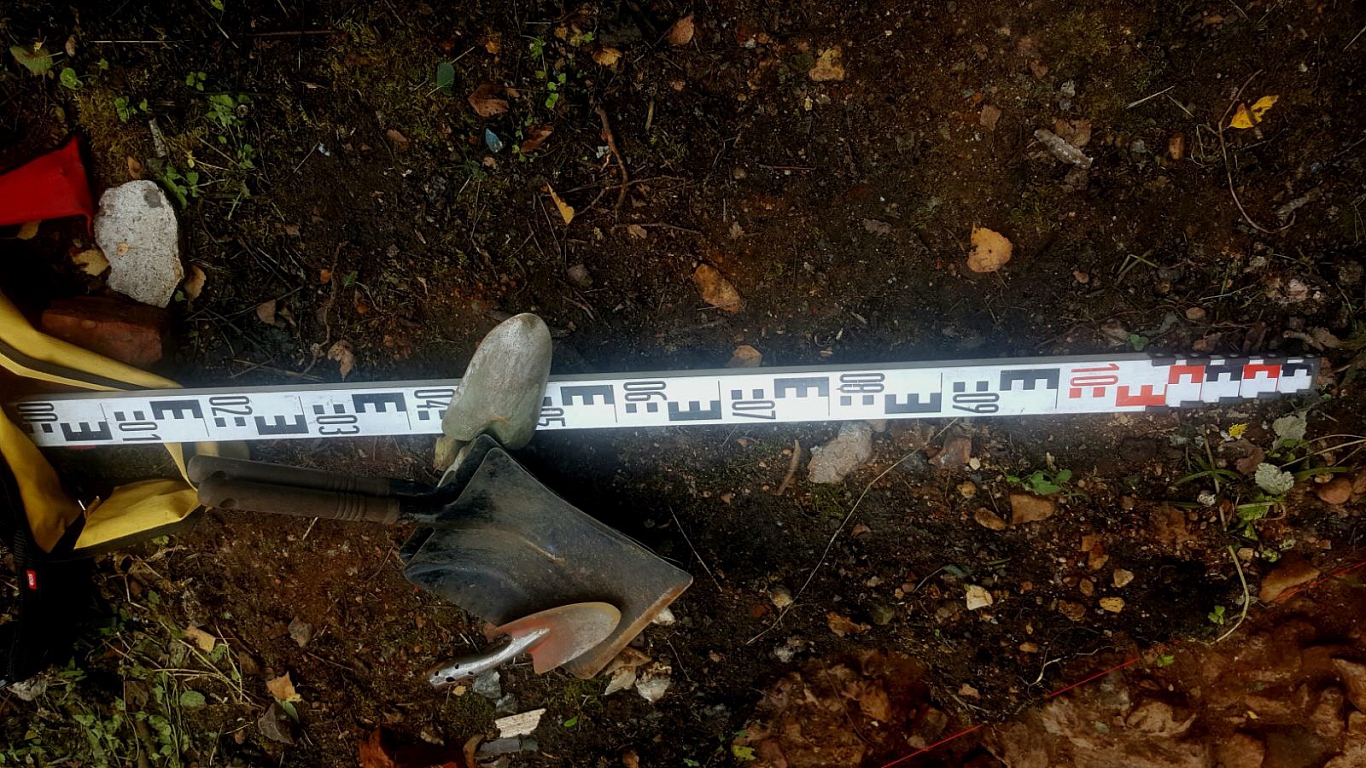
The full picture shows that a the idea Western Europe was developing heavy industry while Eastern Europe did little more than grow grain and chop trees is a gross over-simplifcation, says Auziņa.
"Such objects are fantastic proof that even here there was developed industry in quite large amounts... And now we can understand how it really worked and how it differed from the western industrial processes, for example in how you can use bog ore to get both quality and quantity of iron. This requires further archaeological exploration," says Auziņa.
Archaeologists and history students will continue their excavations and explorations at Vecmuižas iron works until the end of this week and hope to continue next year.
